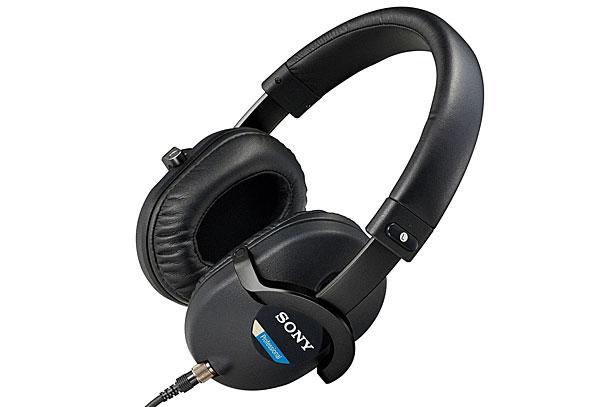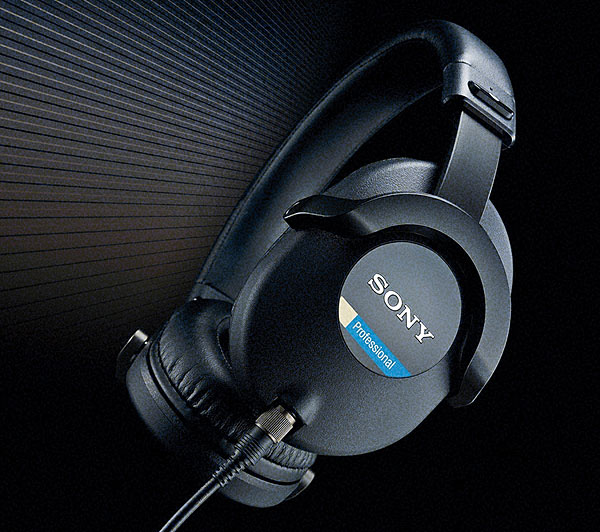Sony MDR 7520 Headphone

AT A GLANCE
Plus
Professional monitor sound, par excellence!
Extended high-frequency response
User-replaceable cable
Minus
No-frills design
Not as open sounding as open-back headphones
THE VERDICT
Sony’s MDR 7520 is something of an “anti-Beats” headphone that fashionistas will shun, but its real strength is its neutrality.
Just as I started working on this review, I met with Naotaka Tsunoda, one of the designers of the Sony MDR 7520, in NYC. This soft-spoken man is responsible for a number of Sony’s very best headphones including the legendary Qualia 010 ($2,400), a model that dates from 2004. That one had extraordinary high-frequency response, all the way up to 120 kilohertz, making it a good match for high-resolution audio. Yes, the upper limit of human hearing barely touches 20 kHz, but in my experience, headphones and speakers with extended high-frequency response sound clearer in the range we can hear. The MDR 7520 is a far more affordable statement design that was initially offered to the professional market but was just recently made available to consumers.
Some might be disappointed that this model looks like one of Sony’s workhorse professional ’phones, but the sound-producing elements—50mm Liquid Crystal Polymer Film dome drivers—offer high-frequency response that reaches to 80 kHz, far beyond the high treble capabilities of the best planar magnetic and electrostatic drivers. Tsunoda explained that his research on the Qualia 010’s drivers led to the Liquid Crystal Polymer Film driver. The key to developing this type of driver is combining light weight with extreme rigidity and high internal loss to minimize coloration and distortion.
The headphone’s padded headband and large, extended oval ear cushions aren’t the plushest or softest around, but comfort over hours of use was pretty good. Befitting its pro status, the MDR 7520 comes with a long coiled cable, fitted with a locking 3.5mm plug that connects to the headphone’s left ear cup, and at the other end of the cable, a 3.5mm plug for your smartphone or player. A screw-on 6.3mm plug adaptor and soft carry case are the only included accessories. The cable lacks a mic and phone controls.

This is a closed-back headphone, so it isolates the wearer from external noise, but the magnesium alloy ear cups have small vents that serve to optimize the driver’s low-frequency response. That’s one of the MDR 7520’s key strengths—you get seriously potent bass; this headphone communicates the music’s pulse like few others in its price class. Bass goes deep, definition is rock solid, and on Thom Yorke’s Eraser album, the visceral impact was revelatory. Shure’s SRH1540 ’phones had even more low-end oomph, but its bass sounds sluggish next to the nimble MDR 7520.
It definitely sounds like a closed-back headphone, though, so be prepared to find the soundstage less spacious than with the better Sennheiser or Grado open-back designs. I wouldn’t say the MDR 7520 is claustrophobic or closed-in, but if you’re used to open headphones, you may notice that the MDR 7520’s soundstage always remains tucked inside your noggin.
While watching films, the MDR 7520 utterly disappears, and you get sucked into the story. During a viewing of the Flight on Blu-ray, the jet engines roared and the passengers’ bodies thumped as they bounced off the interior surfaces as the plane rolled and pitched during the terrifying crash scene. I was on the edge of my seat, and after the impact, the emergency service vehicles racing to the site sounded remarkably realistic.
I compared the MDR 7520 against the NAD Viso HP50 headphones ($299) with Telarc classical music SACDs, and the differences between these two headphones were far from subtle. The Viso HP50 cloaked the recording venue’s ambience and collapsed the sense of space, while the MDR 7520 clarified all the missing details. The HP50’s rendering was soft-focused, while the MDR 7520 was razor-sharp and felt more accurate overall.
Sony engineers are working on the next generation of high-end headphones, so perhaps the best is yet to come. I’ve said it before, but it bears repeating—we’re living in the Golden Age of headphone design, and it’s getting better all the time.




























































